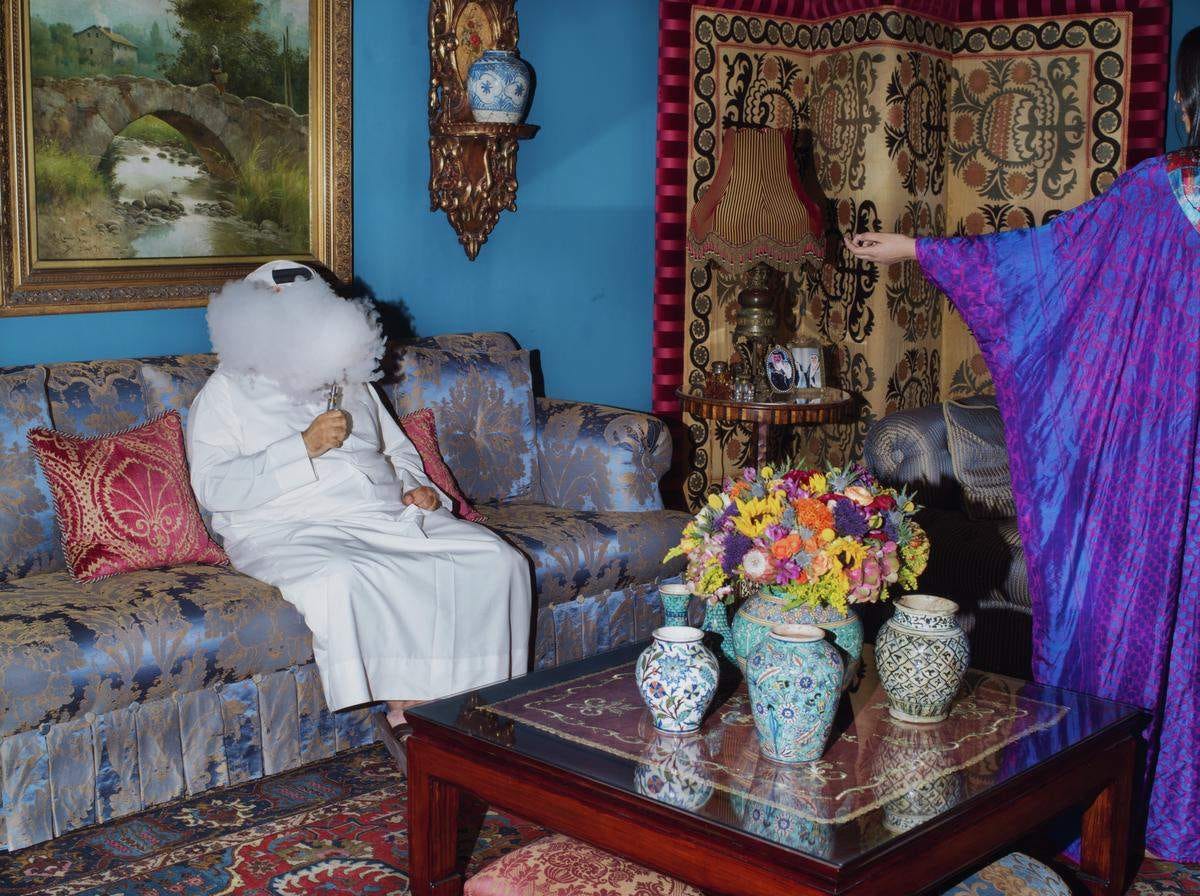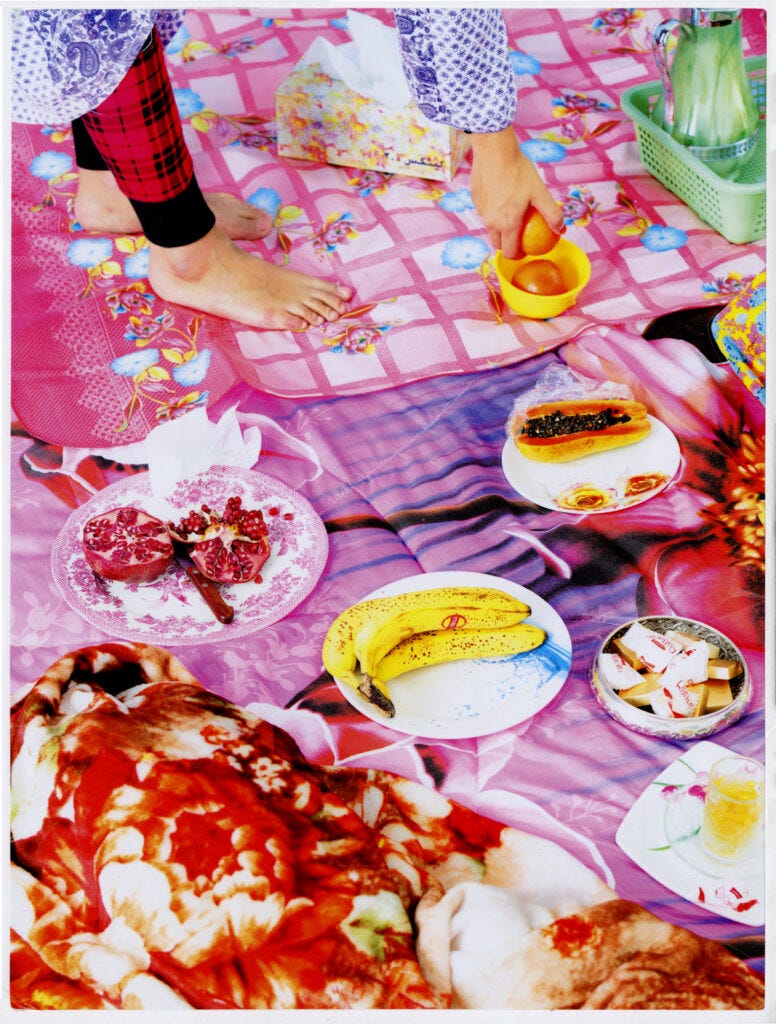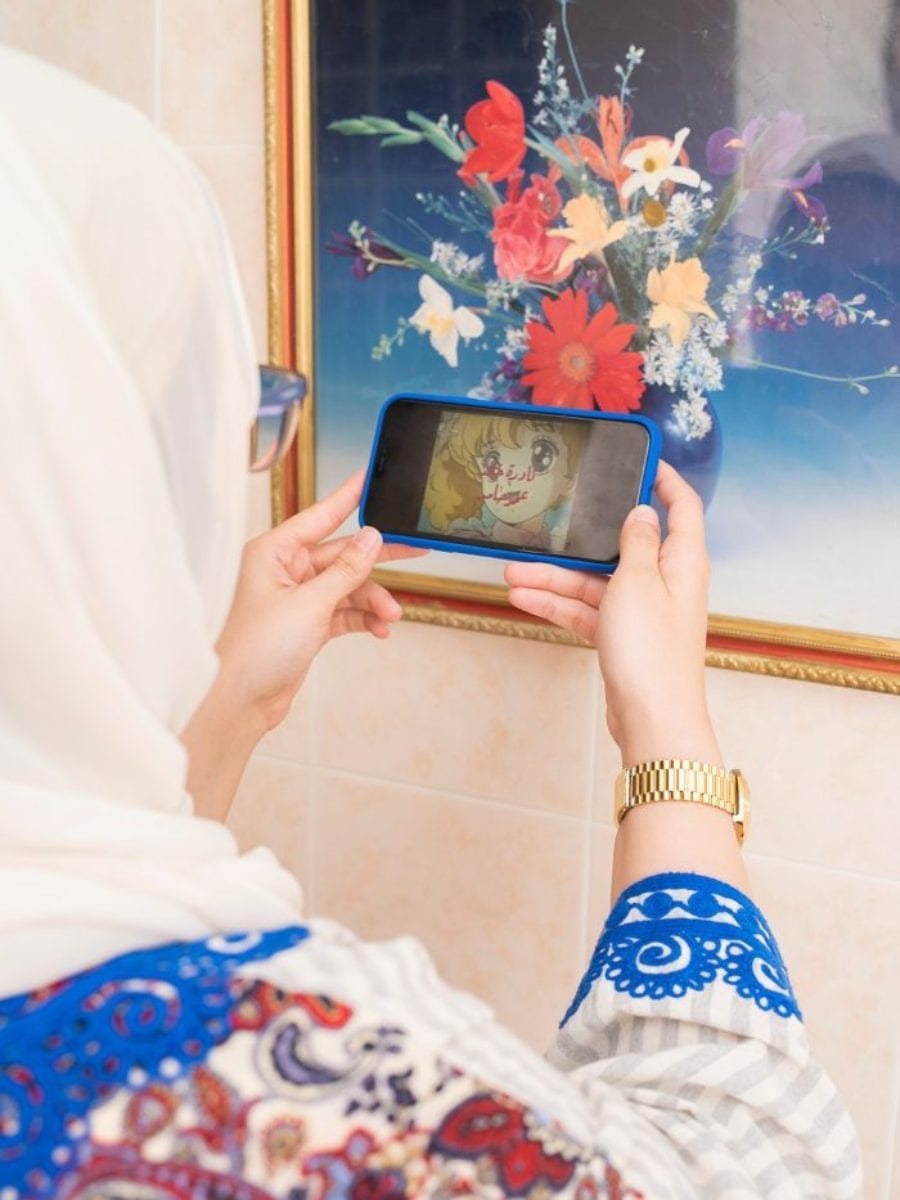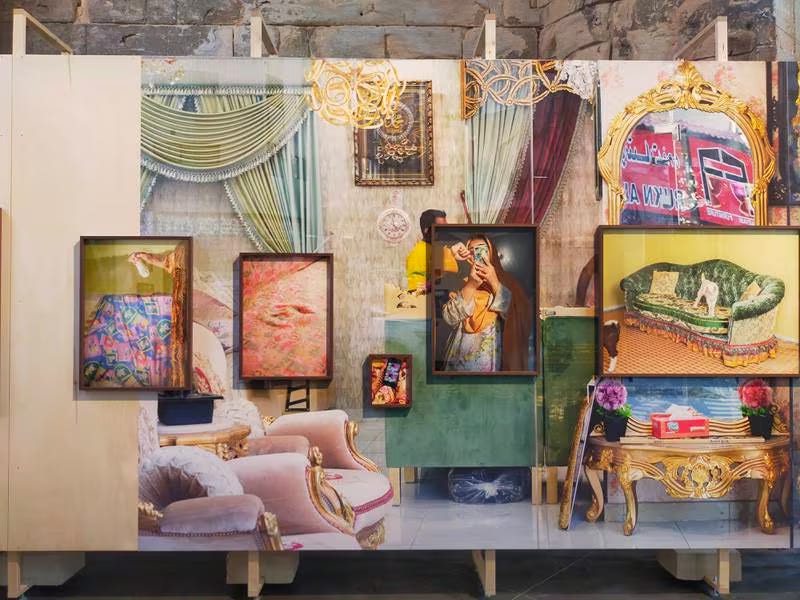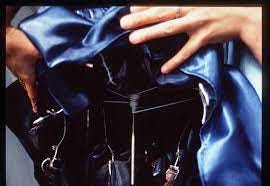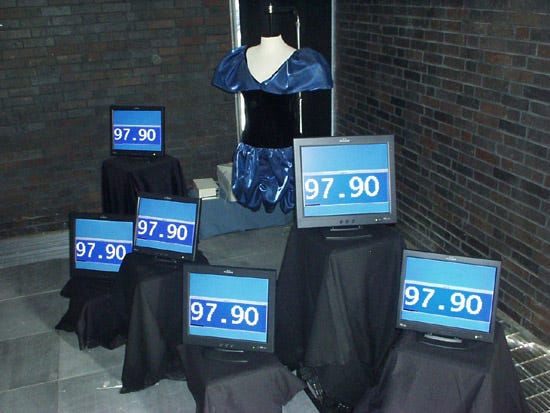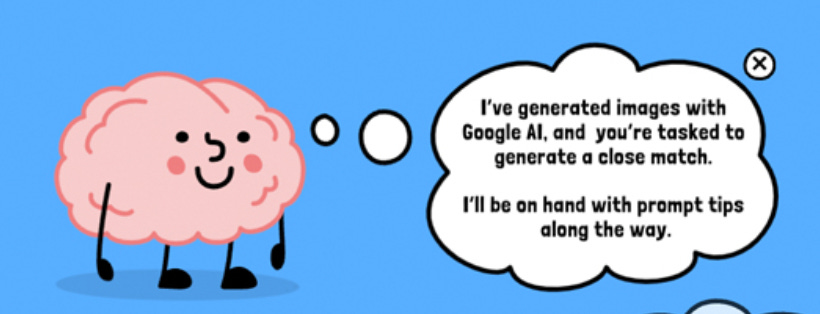Layers of Taste
EYES ON: Farah Al Qasimi’s photographs
Farah Al Qasimi is an artist working between Abu Dhabi and New York. Her work builds rich cultural worlds across time periods and places, often by revealing the inner decorative life of a family home.
Seeped in saturated colours and dense patterning, these interior spaces, and all their many material surfaces, capture the twisted histories of class and taste.
The political underpinnings of these worlds of taste—which have been cross-polinated between the east and west, America and the UAE, colonial pasts and globalised todays—are revealed through how we, as viewers, evaluate them in Al Qasimi’s images. To call something “gaudy” means something. To think something’s “tacky” does too.
WHY WE’RE WATCHING:
The politics of taste feels very present in these photographs. But, these politics are made even more complex when you view Al Qasimi’s work in the physical, where she introduces what feels like a new geographic location—the digital.
Currently up in a room at the Tate Modern in London, Al Qasimi’s displays, like her subjects, are made up of many layers. Loose photographs bump up against framed photographs on expansive printed wallpapers. Image on image on image. There’s so much to take in. New colours, new references, new data.
All the more dense, the layered display of images mimics the experience of moving through life, mediated through digital layers. The melting of cultural contexts that takes place between screens now takes place on the walls, making the web of aesthetics even more difficult to unpick.
The Hemline Index
EYES ON: Nancy Paterson’s Stock Market Skirt
Nancy Paterson was a writer and an artist working in the realm of new media studies. She was known for her work that dug into gender, the internet, electronics and cyberfeminism. Her Stock Market Skirt is the embodiment of all these interests.
The 1998 dynamic piece consists of a dress whose hem shortens as stock market prices rise. Length is tied to price. The piece, given the grand title of the first “internet-controlled telerobotic device to visualize data”, was a breakthrough in getting live internet data (in this case, live stock pricing) to control a motorised mechanism.
WHY WE’RE WATCHING:
Beyond making the breakthrough that is a data-interactive mechanical item, Paterson chose a fashion item that is importantly female coded. In choosing a skirt, the piece is doing something else.
As Garnet Hertz writes on the project, “Technology is never just technology, it is always intricately intertwined with people, objects, bodies, places, practices, cultural values, and beliefs.”
In the small act of hiking up some skirt-material, much greater associations to gender, economics and politics are invoked. The beauty of this piece is in how incredibly succinct that small act is.
Prompt Writing Workshop
EYES ON: Say What You See
Created by Jack Wild (the artist in residence at Google Arts and Culture Lab), Say What You See is an “experiment” that seeks to teach the art of image prompting.
Made with the help of Google AI, the experiment asks for your description of a generated image on screen, and then uses that description as a prompt to create a new image. To move onto the next level, your prompt has to produce an image that is above a “visual threshold” ie. it looks enough like the one you were describing.
Like in any language learning app, a little personified margin-dwelling character (in this case its a smiley brain) gives tips on how to improve your prompt writing and so produce more successful image results.
WHY WE’RE WATCHING:
Say What You See is interesting for not only what it teaches but how. The initial disbelief that followed the announcement that prompt-writing is/ will be a valuable skill has worn off in many ways, but seeing this experiment, designed like any other early childhood education tool, that shock is renewed.
Just like learning French, learning to write prompts requires the observation of language rules. To become better at it, you must learn and apply the rules. This, of course, is not new information. But seeing this laid out in what looks exactly like a subject, object, verb exercise, sends it home.






